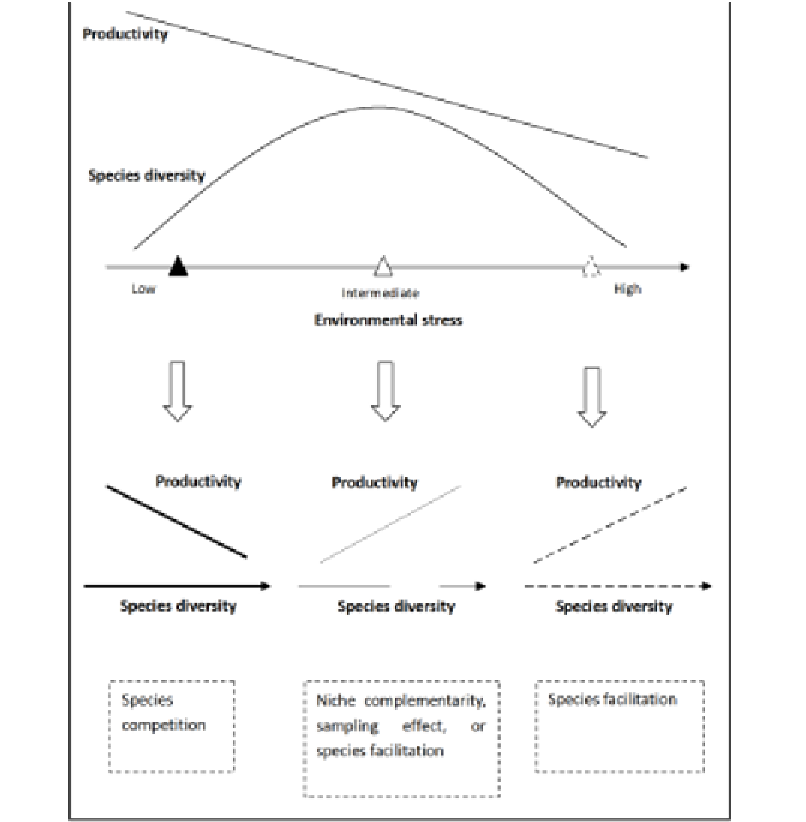Environmental Engineering Reference
In-Depth Information
Figure 3. Predictions of relationships between species diversity and community productivity along
environmental stress gradients in coastal wetlands.
Direct interspecies facilitation can increase species diversity (as discussed above) or even
phylogenetic diversity (Valient-Banuet & Verdu 2007; Verdu & Valient-Banuet 2008), which
would increase productivity of plant communities through the process of niche
complementarity (Verdu et al. 2009). If the functional traits of the benefactor and the distantly
related beneficiary are niche conservative, that is each species has distinct demands on the
niche, the benefactor facilitates the distantly related beneficiary, thus species facilitation
increase phylogenetic diversity of the plant community. Phylogenetically diverse
communities can maximize resource use among species, and thus enhance functional
complementarities to increase overall productivity of the community (Webb et al. 2002;
Maherali & Klironomos 2007; Cavender-Bares et al. 2009). Cadott et al. (2008) found the
phylogenetically diversity can even explain more of the variation in productivity of plant

